blog

Ueli Steck in memoriam
Ueli Steck, our long-time friend and ambassador, died in a climbing accident in the Himalayas on April 30. Ueli was not just an exceptional athlete and explorer. His humble attitude and persistence to realize his dreams was an inspiration to many – us included.
Ueli Steck, 4.10.1976–30.4.2017
We were privileged to be by Ueli’s side since 2005. We saw him grow from a speed climber in the Alps to one of the best mountaineers of his time and an exceptional endurance athlete.
Ever since Ueli’s 2008 record-breaking solo speed ascent of the north face of the Eiger Ueli Steck was regarded as one of climbing’s most spectacular talents. In 2013 he was in the limelight after making an incredibly bold solo ascent of the south face of Annapurna (8,091 m) in 28 hours – a new record. The ascent won him the Piolet d’Or, one of climbing’s most prestigious awards.
“I was at the limits of my physical and mental ability. To go to such limits changes your consciousness,” Ueli said after the expedition. Climbers regard it as one of the most significant climbs in the Himalayas in a generation.
Ueli did not do things the traditional way. He wanted to climb light to be able to move fast. To him fast meant less time spent at altitude which increased safety. But Ueli was also a purist. “It’s out of the question for me to use bottled oxygen,” he said. “I either make the summit without it or I turn back, go home and train more.”
And train he did. He was preparing for his climbs like an Olympic endurance athlete. Climbing was just one part of getting faster, being better. In fact, Ueli really fell in love with trail running and believed endurance training could be the best way for him to become even better as a mountaineer: the gains he could get by training climbing were marginal compared to the gains he could get by being in the best possible shape.
When preparing for his Everest Lhotse Traverse Ueli travelled to Khumbu Valley for high-altitude training this February. He wanted to spend time and train in high altitude to be ready for his big Himalayan challenge this spring.
And he was ready. We have never seen Ueli as confident and relaxed as he was before his travel to Everest in April. He felt that he was in the shape of his life and was really looking forward to the climbs in the highest mountains of the world.
“Working with Ueli all these years has been an inspiration; his way to see the sport, his pure way to approach the mountains and his determination in his projects pushed also us to do things better. Our long talks were filled with energy and inspiration. We have not only lost an athlete, but a friend who will always be remembered,” says Joan Sola, sport and community manager at Suunto.
It was in the mountains that Ueli felt most at home. To him the north face of Eiger was as casual as a trail in the local park is for us. That is where he felt most at home.
But no matter what the route or the mountain, Steck’s inspiration remained the same. “It’s the challenge of moving on in life,” he says. “I always want to try something I have not done before.”
And that attitude of moving forward, of making progress, is what inspired us the most in Ueli. He showed us all that dreams can come true with determination and hard work.
Ueli, may your spirit forever guard others who live their dreams on the mountains. We will miss you – and your broad smile.
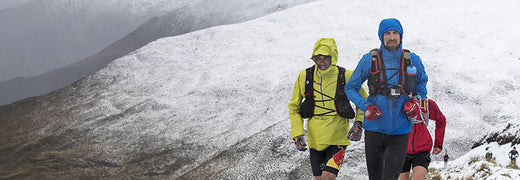
Meet the man you’ll want to train like for XTERRA 2017
I've always been a runner.
Yep – I was a cross country and indoor/outdoor track runner at Central Michigan, a D1 program, where I studied Exercise Science, which I then followed up with a Master’s in Kinesiology. After school I moved to Colorado, and it’s such an active community. I look out my window and see a bike riding by every few minutes. I got into triathlon almost immediately.
I like to run uphill.
And bike, too – I’m tall and skinny, but I still tend to do well on courses with big climbs, whether it’s on the bike or on foot. I think a lot of has to do with living altitude. My favorite XTERRA race location? I thrive on mountain courses – any kind of course that requires a big engine – especially with sustained climbing, that’s where I excel. Swimming is my weakness, but I make up for it on the uphill. Two of my favorite races are the Beaver Creek XTERRA, right in my backyard, and the National Championships in Ogden, Utah.
The toughest races are in Hawaii.
No question! Last year in Kapalua, Maui, we had a ton of mud on the course. It was the first time we encountered that at a World Championship. It wreaked havoc on bikes and drive trains, and it came down to whose bike held up on the mud. Down in Wailea, also on Maui, I had flat tires four out of ten years racing there. That made for interesting races! Carrying the bike, carrying wheels, tubes wrapped around my neck… but I’ve always finished the race!
Cross training is important...
I do more consistent strength training in the winter, and take advantage of the winter environment with snowshoeing, nordic skiing, and a bit of fat-biking. Not quite as much alpine skiing as I’d like to fit in.
...But not as important as regular training, done right.
I’ve been using Suunto products for a while, starting with the original multi-sport watches from nearly a decade ago. I’ve always taken a very scientific approach, and that turned me on to Suunto products. Mainly, I’m looking for objective ways to measure intensity and training load. It depends on the sport that I’m doing – pace if I’m running flat ground, heart rate if I’m running up Vail Mt with snowshoes, power on the road bike. But it’s all a guide – I’m not locked into any one metric. For 2017 I’m refining my approach – last year I had come off the championship win, and did a lot of racing all over the world, ‘saying yes’ to everything – I spread myself pretty thin. This year I’m competing less, training smarter and more efficiently, and will build in a little more spacing between my key competitions.
One guy I can’t shake is Braden Currie.
XTERRA is a race against mother nature – but I can’t seem to get away from Kiwi Braden Currie. I’ve been locked into many man-on-man battles with him over the years – including an epic photo finish last year. But we just had a fun race together on the same team for once at his event in New Zealand.
I’m ready for battle in 2017.
I’m feeling strong and healthy, ready to go for another year. Motivation is high! It’s still really early, but I think I’m setting myself up for another good year. First race of the year is in Costa Rica!
Ready to have your best year of racing yet? Then stay tuned for Josiah’s training tips on suunto.com – and make sure you check into the Middaugh Training Corner on XTERRAplanet.com.
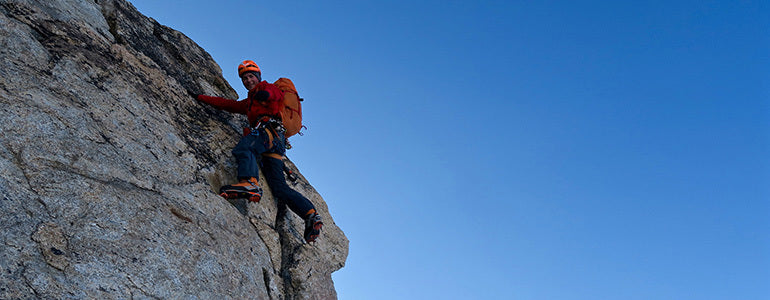
Finding the flow in the mountains
Top alpine climber Luka Lindič says learning to move fast and fluidly in the mountains has been the foundation of his success. © Aleš ČesenSlovenian climber Luka Lindič, 27, sees becoming a skilled alpinist as similar to building a house. With a strong foundation, the rest is possible. Without it, you’ll eventually run into difficulties. “It's really important to spend a lot of time in the mountains moving in all kinds of terrain, learning to be comfortable, because only then can you climb harder routes,” Luka says. “For me, building a foundation has been about climbing many, many relatively easy classic routes in the Slovenian mountains. “Many times I’ve realised I can do hard climbs, but if I don’t move a lot in easy terrain for a while then I lose this feeling of moving fluidly. You get stiff. You become slow. You don't have the flow to just move. I think it's really important to keep that.”
© Aleš ČesenHis approach of building the basics has clearly paid off. In 2015, he became one of the youngest people to win the prestigious Piolet d’Or Award, considered the “Oscars of alpinism”. Luka, and his two climbing partners Marko Prezelj and Aleš Česen won the award for their ascent of the north face of Hagshu (6515 m) in India.
Always coming back to relatively easy routes also reminds Luka why he fell in love with climbing in the first place. “I can’t deny that when I have a really ambitious project that’s on my limit it’s also stressful. If I would do only this, I would forget the feelings that originally brought me into climbing – the simple joy of being in the mountains.”
© Aleš ČesenLuka’s love of the mountains began as a child. Hiking is one of the biggest sports in Slovenia and his hiker parents took Luka whenever they went. He remembers walking past rock faces and looking up in wonder at the climbers scaling them.
It's really important to spend a lot of time in the mountains moving in all kinds of terrain, learning to be comfortable, because only then can you climb harder routes.
His curiosity grew and at 14 he joined his local climbing club and was fortunate to be mentored by some of Slovenia’s most experienced alpinists, particularly Marko Prezelj. They not only taught him the skills, but also brought him into the strong Slovenian climbing tradition.“We live in such a small place, a small community, and we meet day-to-day in crags because the distances are so small. That's one of the reasons we have so many good alpinists here. I’m very lucky.”
© Aleš ČesenOne of his toughest climbs was what was dubbed the “alpine ascent of the season” in 2014; the first free ascent of Rolling Stones on the north face of the Grandes Jorrasses, Mont Blanc massif. “Some people said it's wasn’t possible to do it in the style we did,” he says “But it was just a question of self-confidence.” This summer he is going to Pakistan and has climbing permits for Broad Peak (8051 m) and Gasherbrunn IV (7925 m). However, he wants to keep his plans open. “The reason is I want to be more free and not fix too much before I go,” he explains. “Many times when you are in big mountains you need to change your plans because of different factors. It's really important you feel free to do so, to play, to follow some crazy ideas, to think out of the box, and not be too fixed.”
Luka's climbing achievements:
Bhagirathi IV (Garhwal Himalaya, India) 6200 m, September 2009. Bhagirathi III (Garhwal Himalaya, India) 6546 m, September 2009. Bhagirathi II (Garhwal Himalaya, India) 6612 m, September 2009. Hagshu north face (Zanskar, Himalaya, India) 6657 m, September 2014.
Main image: © Aleš Česen
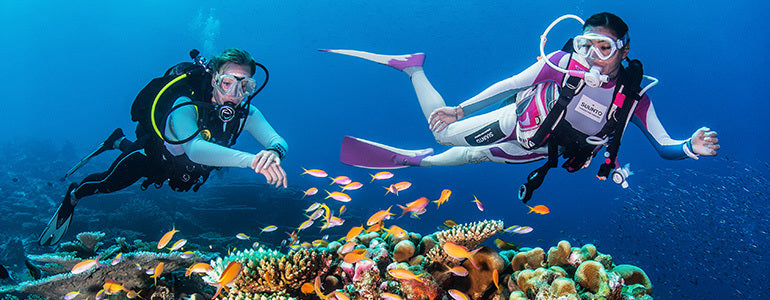
A pro diver’s essential tips for newbie divers
Teaching the joy of diving is Marco's passion. © atmosphereresorts.com
Diving isn’t an extreme sport
The classic newbie misunderstanding is thinking that diving is an extreme sport. Often they think it’s a very physical sport, but the opposite is true; diving is a very relaxed activity. Water is much denser than air, and that’s why we need to move slowly and be streamlined all the time. Once I taught a yoga teacher and after the dive she said, “being underwater is similar to a yoga class”.
Different strokes for different folks
Every person is different. One person, for example, needs much more time to get the buoyancy right, while another needs less (buoyancy is difficult in the beginning, but gets easier with practice). It’s important to be patient and to find an instructor you’re comfortable with so you can relax.
© Bo Mancao
Get in shape
You don’t need to train specifically to become a diver, but it’s helpful to be in good physical shape and a strong swimmer. Before you start your course, you need to sign a medical questionnaire to make sure you are fit to dive.
One step at a time
Don’t rush in and buy all the gear immediately. Give it time to make sure you really want to commit to diving. I highly recommend buying your own dive mask, however, because every face shape is different and it’s important to be comfortable. You can use it for snorkeling, too. If you decide diving is for you, then it makes sense to buy your personal dive gear. But go step by step.
© Bo Mancao
Follow the stars
Choosing the right dive center to learn at is important. It’s best to find a five star PADI center. Taking an online diving course is a great idea too so when you finish your studies online you can focus on the practical side of things.
Dive into open water
So, you’re 100% into diving! Time to complete an open water diving course! If you finish the theory online beforehand, an open water diving course can be completed in two to three days. With the theory included, it takes between three to four days. Don’t rush it. The instructor needs to make sure the students are ready. Following this is the advanced open water diver course.
Click to see the new Suunto Zoop Novo Blue*!
© Bo Mancao
Find a dive buddy
You should never dive alone. It’s safer and more fun to have a dive buddy, someone you trust, and whose equipment you’re familiar with. Diving is a very social activity so finding a buddy won’t be hard. You usually dive with someone you meet on a boat, at a resort, or in a dive shop. It’s important you speak about the dive and equipment before you take the plunge together.
Working with fear
Experiencing some level of fear is a very common experience for newbie divers. I was really afraid when I did my open water course. That’s when a good instructor can make all the difference. If the instructor is calm and gives the student time to adjust – because his or her brain is overloaded with new information – they usually work through it.
Marco won't be giving up his day job anytime soon. © atmosphereresorts.com
Keep diving!
Most people dive just for fun so they mainly dive when they’re on vacation. How often you dive depends on your personal goals, but diving once or twice every six months or year is a good idea so you avoid losing skills and familiarity.
*Suunto has just released the Zoop Novo Blue, a dive watch perfect for beginner divers or people seeking new adventures. Click here for more info about this simple to use dive computer.

Suunto and TrainingPeaks join forces to help athletes to reach their goals
Suunto today announced a co-operation with TrainingPeaks, the leader in endurance training and coaching apps. Suunto and TrainingPeaks have been compatible since 2015, but the new integration will allow a wider range of Suunto users to gain access to their powerful training insights.
Combining world-class data with world-class tools
Both Suunto and TrainingPeaks are already popular amongst the goal-oriented athletes. As Suunto offers the best tools for measuring the training data, TrainingPeaks creates endurance training apps and solutions based on that data to help athletes and coaches prepare the right way to reach their goals.
By combining the valuable data that Suunto sports watches are recording with the TrainingPeaks’ tools, athletes can workout smarter, monitor and analyze their progress as they work towards their event goal.
“At TrainingPeaks we’re always looking for ways to make it easier for athletes to reach their endurance goals,” says Dirk Friel, Chief Evangelist at TrainingPeaks. “This new integration with Suunto is another example of our commitment to making it simple to track and monitor your health and fitness goals.”
Both Suunto watches and TrainingPeaks’ solutions are used by professional athletes such as Tour de France teams, IRONMAN® World Champions, Olympians as well as and age-group athletes and coaches around the world. All connected Suunto sports watches can now be synced with TrainingPeaks via Suunto app, including Suunto 9, Suunto 3 Fitness, Suunto Spartan, Suunto Ambit and Suunto Traverse watches.
“Co-operation with TrainingPeaks has provided great value for Suunto customers in the past years and we are delighted to be able to grow this relationship,” said Janne Kallio, Head of Partnership Product Management of Suunto.
Commercial co-operation part of the Suunto’s growing digital ecosystem strategy
TrainingPeaks integration plays an important role in the growth of Suunto’s digital ecosystem strategy. “Our aim is to build great solutions for our customers by being compatible with the best tools and services there is. Growing our digital ecosystem is one of the cornerstones of the growth strategy of Suunto.” Janne Kallio continues.
The collaboration with TrainingPeaks has also commercial benefits for both Suunto and TrainingPeaks users. All customers who purchase a Suunto watch will get a free 30-day TrainingPeaks Premium trial and a training plan created by Suunto, available through the TrainingPeaks Training Plan Store.
In addition, we want to give opportunity for sport and outdoor companies to connect with Suunto’s engaged sports enthusiasts. Our aim is to grow the amount of the compatible services by opening the Suunto APIs, and build a co-marketing and commercial programs with new potential partners by offering the Movesense sensor platform for open development of movement based solutions and services.
More information:
trainingpeaks
www.trainingpeaks.com
If you have any questions about connecting your Suunto watch to TrainingPeaks, please go to support.
For support from TrainingPeaks: https://help.trainingpeaks.com/hc/en-us
About TrainingPeaks
TrainingPeaks creates endurance training apps and solutions that help athletes and coaches prepare the right way to reach their goals. Products include TrainingPeaks web and mobile apps for iOS and Android to help athletes commit to a clear goal, structure their training so they can workout smarter, and monitor their progress as they work towards their event goal. Additional TrainingPeaks products include WKO4 desktop software for cutting-edge scientific analysis and planning, and Best Bike Split’s predictive performance tools. TrainingPeaks solutions are used by Tour de France teams, IRONMAN® World Champions, Olympians, and age-group athletes and coaches around the world. Learn more at trainingpeaks.com
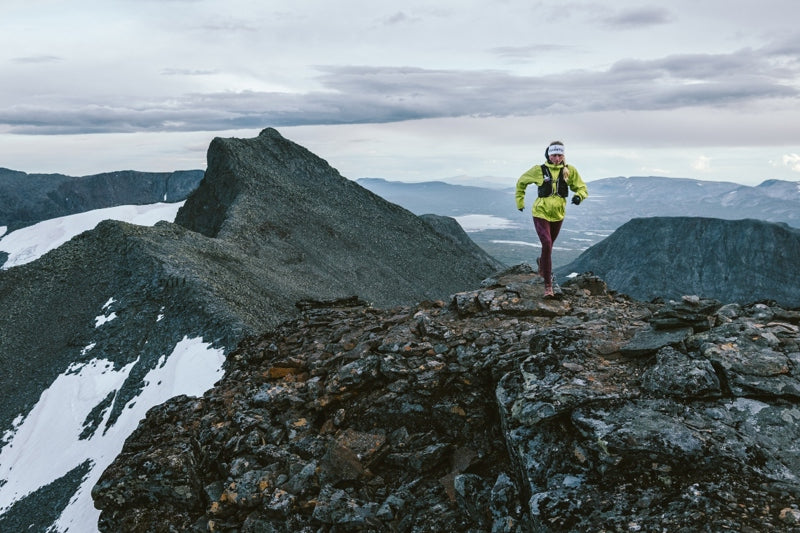
Turn it all off and come back to the present moment
Living just below the Arctic Circle in 2021 during the coronavirus pandemic Freya Orban, from southern Sweden, was missing sunshine and isolated due to social distancing restrictions.
Unable to do the things she loved — train with her cross-country skiing team, go trail running or to the gym to train — she became depressed. All the signs of stress and strain were showing, and then her dog died.
“That was the trigger for everything,” the 25 year Suunto athlete says. “Then I got shingles and couldn't get out of bed for a month.”
Piling on the pressure
At the worst low of her life, Freya started to question everything she was doing. Reflecting in this way allowed her to see what is important in her life, and what is superfluous. Like with so many competitive athletes, she used to pile too much pressure on herself. Going to races, managing her social media accounts, pleasing sponsors, pursuing academic excellence — she had become so busy and future-focused she had lost touch with the freedom and joy of running and being outdoors had always given her since she was a child. She had lost her presence. The simplicity of being in the here and now, senses open, taking in the beauty of the world.
Light at the end of the tunnel
Her journey into a dark place and into the light at the other end of the tunnel has led to massive change. She logged out of her social accounts, turned off her smartphone, stopped planning and instead focused on savoring simple presence in the outdoors and growing food in her garden. The sound of wolves howling in the distance (that’s Sweden!), the taste of wild blueberries, the feeling of wind on her face. Coming back to moment by moment experience, Freya healed herself and is now in the best place ever.
Leaving it all behind and running hut to hut
Watch the short film Presence below and follow Freya and her friend and photographer Lukas Dürnegger as they go on a fast packing hut to hut trip in the mountains of Jämtland in central Sweden. Over six days they ran 155 km with 5242 m of elevation gain. They left their smartphones at home and really tuned into the living world around them. Along the way they took time to stop a lot and ate handfuls of juicy blueberries and cloudberries.
Freya’s 3 tips to find presence
Rethink how you use social media
Freya’s approach to social media has changed. During some periods, she might sign in only once a month. And she posts only what she wants to look back on in a few years. It’s about keeping magical memories, not about sponsor-collaborations or gaining followers. Freya says being busy with screens and social media can make our senses dull and tuned out.
Pay attention to the little things
“A lot of people are caught in hamster wheels,” Freya says. “We go to work and tick off boxes on our to-do lists. But by the end of the day we can’t even remember what was happening. We rush through everything and miss things.”
To reverse this condition, Freya suggests going out into nature and opening up all the senses. “Try to use all your senses,” she says. “Not just your vision. Use your hearing, sense of smell, even taste, touch — the raindrops on your forehead. Everything you encounter out there, really try to feel it.”
Leave the tech at home
Once a week, leave all your technology at home and go out into nature for a run or a hike. Leave your earbuds, smartphone, GPS sports watch at home and be in the here and now. “Make it about being in nature and running for the joy of it,” Freya says.
All images by Lukas Dürnegger
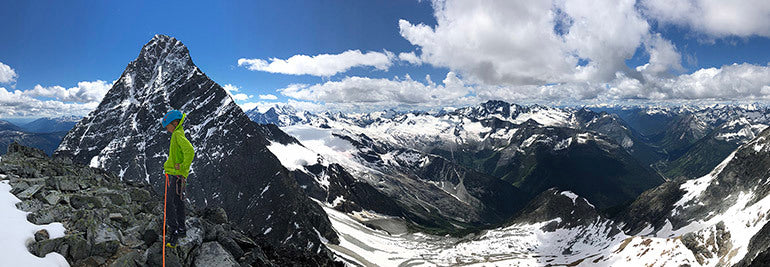
Passing on love of the outdoors to the next generation
At Suunto we believe the more we appreciate and enjoy the great outdoors, the more we will want to protect it. This means those of us fortunate enough to have been given a love of the outdoors have a special responsibility to do as much as we can to ensure the next generation receive the same.
In the same way as ski mountaineer Greg Hill’s parents instilled in him the spirit of adventure and love for the natural world, we can do the same. Even if we don’t have kids, or if they’ve long left the nest, we can support organizations and events that achieve the same.
Passing on the passion
By Greg Hill
I am always a little conflicted around Christmas, societal norms tell me I should be buying gifts for my children. My wife is great, she gets them the things they need and a few of their wants. When I reflect back to the gifts I received as a child, it was the gifts of adventure that I liked best. The gift of a season’s pass at my local ski resort, and the gifts of the gear to ski with. Or the gifts my parents gave without realizing that they were giving them. I have been following their footsteps in this regard.
Our family home was far up a dirt road in Quebec, Canada. Our nearest neighbor was at least one kilometer away, and our house surrounded by deciduous forests. I have very few memories about the town we lived near, most are centered around backyard adventures. I can remember family moments hiking up Round Top mountain, cooking bannoch bread on a stick over an open fire. My parents facilitated my adventures by showing me what was possible. We canoe camped, hiked a lot, downhill skied, Nordic skied, the activities were endless. I cannot thank my parents enough for bringing me up appreciating the outdoors.
Having sparked this thirst for the outdoors, it was impossible to slow it. As I grew, so did my adventurous spirit. I was encouraged to go camping with friends, and the school I went to had an amazing outdoor education component. Soon, I was introduced to rock climbing and it became my gateway sport to mountaineering.
I was captivated by the rewards that came from overcoming the challenges; the intense feeling of accomplishment that followed any climb completed. This feeling was unparalleled and I began searching for it more and more. The challenges evolved from rock to ice, from cliffs to mountains. Soon my whole life was centered around outdoors and adventures.
These moments brought me a source of happiness and overcoming these challenges taught me a lot about myself. Through training hard, working towards harder and harder goals I developed more and more self-confidence. Time in nature taught me patience and an appreciation for nature.
Yet, I accessed all these wild places in a big truck, from a snowmobile or a helicopter. Solo drives to trailheads had me thinking about my impacts. Raising my kids started my questions on how I was living and what legacy I was passing on to them.
There was no profound “aha” moment, but my “eco-anxiety” grew till all of a sudden I needed to change. I have looked at all the aspects of my life and decided to work on what I can. I eat less meat, consider all my lifestyle choices, and drive an electric car. I fly less, and adventure locally a lot more. All of these choices resonate into a better feeling overall and a knowledge that I am trying to be better.
Raising my kids I have been trying to pass on the passion for adventure, and the appreciation for the outdoors. I know how much I have gained from my experiences and can only hope that they get as much from nature as I have.
While out with my kids I truly try and give them the best experiences, keeping the rewards as a priority, aiming for enjoyment, not exhaustion. Showing them the potential, yet letting them come to it on their own terms. Forcing children can easily turn them off activities so I simply encourage and open the doors, hoping they will follow.
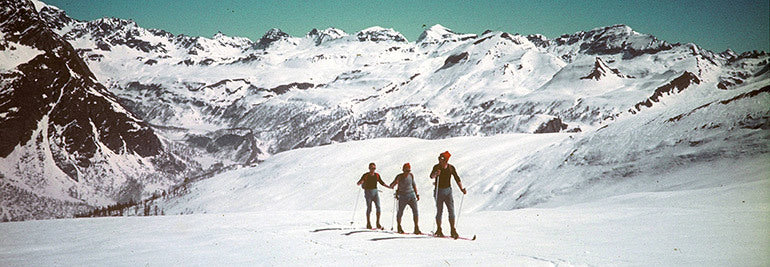
Der Lange Weg is absolute insanity
There are a couple interesting FKTs happening in the world right now. You might have heard about Ryan Sandes' epic across the Himalayas – but you might not have heard of Red Bull Der Lange Weg. In case you don’t speak German, we’ll translate that for you: the long way. The long way across what? The Alps – from Vienna to Nice. Over 2,000 kilometers and 80,000 height meters. The time to do it? 40 days. While they hope to spend most of their time on skis, they’ll also be moving on foot, climbing technical terrain, and doing whatever is necessary to make their traverse happen via human propulsion.
Der Lange Weg starts on Saturday, 17 March. (©Sandra Birklbauer, Red Bull Content Pool)
If you think this sounds absolutely brutal, you’d be right – some of the itinerary includes days with almost 4,000 of climbing and 80+ km of horizontal travel, and takes the athletes to the top of the Alps – including Dachstein, Grossglockner, Piz Palü, Mt Blanc, and a few other famous peaks. No rests. No pauses. At least they don’t have to camp. (That’s… assuming they make it to the hut. If they don’t make it to the hut by dark? Well… we’re going to guess they keep going.) The crew of seven includes four Suunto athletes – Mark and Janelle Smiley from the US, Philip Reiter from Germany, and Nuria Picas from Spain – each one of them extremely accomplished athletes in their own right.
The original crew that skied from Vienna to Nice in 1971. (©Klaus Hoi, Red Bull Content Pool)
What’s perhaps most interesting before the challenge start is the story of those who came before them – almost 50 years ago, an Austrian team of four embarked on this adventure, with big questions about whether they could finish. While Robert Kittl, Klaus Hoi, Hansjoerg Farbmacher and Hans Mariacher were using the most modern ski gear of their time, it’s a far cry from what’s underfoot today – not to mention the advances in outerwear, layering, and of course, the gadgetry that helps us navigate. The adventure was well documented for its time, and Red Bull shared a few of the photos that you can see here. Extremely impressive stuff!
The planned route for Red Bull Der Lange Weg will have any number of difficult days – but some are a lot longer, harder and higher than others. We picked out a few highlights for you.
Grossglocker
After 5 days of 2000+ height meters in the first week alone, one of the first big days will be the top of Austria – Grossglockner. They’ll need to ascend a total of 3600m over 38km, reaching an altitude of 3,454 – meaning the air will start to get thin.
Diavalozhütte
On day 19, they’ll spend 12 hours in ski boots picking up 3300hm and 55 kilometers. Two days later, they’ll cover 71km in a day.
The last blast: Casteldelfino to Entraque
Just two days before the finish, there’s one last big push: 3,276 height meters and 81 kilometers, and 15 hours on foot.
1,917 kilometers, 85,000 height meters
The cumulative numbers here are just mental – they’ll take an estimated 420 hours to traverse almost two thousand kilometers, and pick up 85,000 estimated height meters (and we’re going to guess quite a few more here and there.) That’s like climbing Everest from sea level 9.5 times – up and down, day in, day out, 40 days in a row.
Sound awesome? It absolutely is. Will they finish? Even the athletes themselves can’t be positive – bad weather, injury, equipment issues can put a stop to the adventure at any time.
Find out what Mark Smiley packed for this epic skitour!
Learn more about Red Bull Der Lange Weg
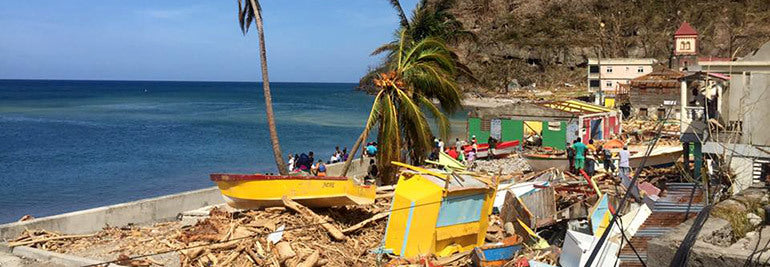
The freedive community raised $26,000 to help this hurricane-ravaged Caribbean island
To say Jonathan Sunnex’s life has taken a few unexpected turns is a bit of an understatement. How else would a Kiwi from Ngaruawahia, New Zealand come to be living on the little bay of Soufriere, in one of the least-known islands in the Lesser Antilles? But that question was hardly at the forefront of his mind while he sat at the airport in Miami – stranded thanks to a little storm called Hurricane Maria.
The entire Caribbean and much of the southeastern United States had a tense hurricane season – first Hurricane Irma barreled its way across multiple islands, then just five days later Hurricane Maria sprung up in its wake. While Dominica dodged a major hit with Irma, Maria was another story. The island suffered a direct hit – and almost three months later, much of Dominica still is without power or running water.
The fact that it was a pretty big wrench in the works of Sunnex’s biggest project of the year – the Blue Element Freedive competition – was essentially an afterthought. For Jonathan and girlfriend Sofia Gómez, it was a tense two-week wait in Miami, wondering if when they returned home they’d find their dive school – and their home – still standing.
“We were in Roatan for the World Championships,” says Sunnex. “We wanted to get back early to prep for Blue Element. It was scheduled for the 11th – 17th of October, but Maria hit at the end of September. It went from tropical storm to category 5 in just a few hours.”
At first he was hopeful the event could still go on – but as reports came in about the damage done to the island, expectations were quickly lowered. “We were really hoping our dive platform was still there,” he said. “Communication with people onsite was impossible.” But one of the first things he did? He set up a GoFundMe and reached out to the free dive community – hoping to raise a €1,000 of donations for food, water and other supplies. They ended up hitting their goal, and even bettering it – raising $26,000. The highlight moment? Jonathan – whose long, flowing hair had been growing for ten years – got on Facebook Live and shaved his head and cut off his beard, raising $700 in just twenty minutes.
With the bounty of the successful fundraiser ready to share with the island, he started making his way home – but it wasn’t a straight shot. “I flew to Martinique, and just started picking up supplies – water, chainsaws, literally thousands of dollars’ worth of food – whatever we thought we could fit on a boat,” says Johnny. “Then I hitched a ride with Piwi Croisieres Calypso over to Dominica.”
When he arrived on the island, he was ‘mostly speechless’. "The island is the greenest tropical forest – super dense bush – it looked more like a firestorm hit it,” he says. "No foliage. Bark ripped off of trees. No green left. It was a dry dusty desert. Piles of debris. Giant trees on the beaches, debris two meters high.” The damage to their home was real – the house/school was flooded, and the platform had been dislodged and blown to shore. They lost their competition rope, worth about $1500 – although it was later recovered, and they hope to repair it.
Without a doubt, the competition was off – so Sunnex and the competitors already on the island diverted their attention to clean-up and aid, cleaning beaches, roads and helping repair the island’s infrastructure.
There’s still much to be done – but Sunnex is confident the Blue Element freediving contest will return next year – and probably not during hurricane season. “The conditions here are impeccable,” he says. “Calm and flat, no current, water’s warm, perfect.”
Want to pitch in and help Dominica? See the Blue Element GoFundMe page here.
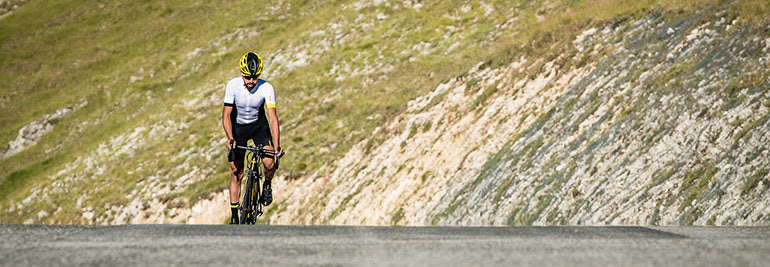
How to ride the Giro d’Italia in the hardest way possible
Any serious cyclist knows that the Tour de France isn’t necessarily the best bike race on the planet, just the most well-known. Those in the know would are that the Giro d’Italia – aka just ‘The Giro’ is harder, steeper, and in a more beautiful location. And guess what? 2017 is the event’s hundredth birthday.
As such, it’s natural that Italian long-distance endurance cyclist Omar di Felice wants to take it on, in a unique way never done before, for his new project #ITALYUNLIMITED3500. He’ll do a variation of the route, starting and ending in Rome. He won’t follow the exact route (it changes every year). But what’s impressive? The race normally takes place over three weeks. He aims to do it in just 9 days, starting Wednesday, September 20th. Sleep? That will come mostly in 40-minute power naps, approximately every ten hours.
3500km with almost 60,000m of climbing. Here’s how he’ll do it, section by section.
Part 1: Rome to Calexia
Distance:1073.2km
Vertical: 17346m
Omar will start in classic style: at the Olympic Stadium in Rome. The climbs begin quick – he’ll have his first 1000m climb within the first 100k. Says Omar: "The biggest challenge in the south part of Italy will be road conditions: there won’t be flat parts but a continuous up and down and the asphalt isn’t so good. So the first 1000km will be very tough!” His first push will be his longest – he’ll try to go 30 hours before taking his first nap.
Part 2: Sicily
Distance: 380.8km
Vertical: 6329m
After getting on to Sicily, Omar will rack up 380km on the way to Palermo. With one big climb (and we do mean big – over 1800m!) it will be challenging.
Part 3: Sardinia
Distance: 283.6km
Vertical: 3039m
After Siciliy, Sardinia will be a breeze – 100km less distance and half the climbing.
Part 4: The Alps and back to Rome
Distance: 2075.5km
Vertical: 31556m
Now the battle begins – already exhausted of mind and body, Omar will take 2075km of rolling hills and high mountain passes – including one mega climb that will take him up nearly 3,000m, all the way from sea level. Highlights include many of the most famous parts of the Giro d’Italia.
Just to put this all in perspective, let’s look at another record in cycling. RAAM (Race across America) record holder Christoph Strasser completed the approximately 4,800km course in seven days and fifteen hours. Faster than Omar intends to finish – but that longer course had only 36,500 height meters, compared to di Felice’s upcoming 58,270. While it’s tough to compare the two, there’s no question the steeper and more frequent climbs are a huge part of what makes this upcoming ride so difficult. Bad weather and lack of sleep are likely to be some of biggest factors, Omar has faced such challenges before – but this is another level.
“This ride is simply “different”. A nonstop ride is toughest in terms of mental effort and because you can’t sleep too much. During the winter ride, instead, you have to consider a tough weather and slippery road conditions. But, at the end, I really love both the nonstop rides and the winter rides!”
Where he stops every night will be up to his body. "It’s impossible to set a real plan because it will depends on my physical conditions and weather but, for sure, I predict to stop the first time after 30 hours of ride, then to have a 40 minutes powernap every 10 hours of ride,” says Omar. He’ll consume about 500kcal/hr, so fueling is going to be important!
How will he do? We highly suggest following him on Instagram to get the highlights of his ride – no matter what happens when he starts pedaling, you have to admire him for even dreaming up such a ride. Good luck, Omar!
All images © Luigi Sestili
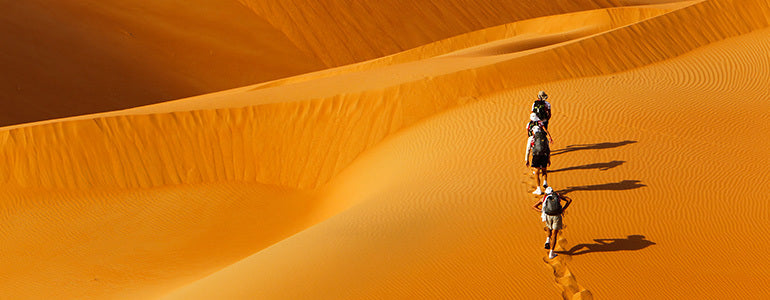
Leadership lessons from an adventure-racing champion
Nathan Fa’avae is the captain of Team Seagate, a world champion adventure racing team. He knows both sides of endurance sport – individual and team competition – but is renown for his ability as a team captain. We caught up with the New Zealander to find out what it takes to build a winning team. Adventure racing has taken Nathan around the world. © Nathan Fa'avaeWhite-water and sea kayaking, climbing, caving, orienteering, trail running, trekking, road cycling, mountain biking, ski touring – Nathan Fa’avae does it all. If the lifelong adventure junky isn’t doing one of the above, he enjoys taking his children on adventures in New Zealand’s stunning wilderness. The 43-year-old has been a semi and full time professional athlete for 16 years and competed in 12 world championships. Remarkably he has done so while battling a heart condition that he’s had surgery for three times. His role as the captain of Team Seagate, which dominated the adventure-racing scene for years, has earned Nathan wide respect as a leader. Any big races in 2016? I’m not sure what racing I’ll do in 2016 and beyond, if any. I’m always fit and active, I love the sport but I’ve done a lot of it. I’m an adventurer so that’s a lifestyle for me, not something I’ll stop doing.
Team Seagate has one multiple adventure racing world championships. © Nathan Fa'avae
Why do you enjoy about team competition?
With the team racing I like the fact we battle together, as a stronger united force. It’s nice to be on the start line with friends and know we’re in this thing together. I get strength and courage from that. How do you see team versus individual competition? As an individual you can control your pace to suit, if you want to ease up, go harder, whatever, but in a team you’re dictated by the speed of the team. The support and camaraderie of a team often makes the major challenges more enjoyable and achievable.
Nathan has paddled in 15 countries and many exposed situations. © Nathan Fa'avae
How do you manage with team dynamics? As a team captain, accommodating and nurturing people to get the best out of them is an important role. My strength in captaining teams is communication and composure. I place high value on open communication and not sweating the small stuff. I try to see everything in a positive light and always look for solutions to problems.
Cross-country mountain biking was his first competitive sport. © Nathan Fa'avae
How do you choose your teammates? Building a team is about matching people who will add value to one another’s skill sets. Team work and unity spirals up if you get that mix right, blending together like-minded people with similar attitudes. It’s important we enjoy being together, socially and competitively. For me personally, I tend to only race with people I truly consider friends, people I respect and trust. That’s how I choose my teammates.
Part of adventure racing is dealing with the unknown – how do you deal with that?
I think our team has always dealt with the unknown because we always expect it. In adventure racing, the thing you have not planned for is going to happen, so you need to be flexible and adaptable, roll with things and not get worried and stressed. My motto is ‘nothing can shock me’, that means when we get last minute surprises, they’re never actually a surprise.
© Nathan Fa'avaeDo teams make better decisions in the outdoors or individuals? There’s no hard and fast answer to this question. From my experience, I feel safer in the outdoors on my own. I know my limits and capabilities and act accordingly. The close calls I have seen were in groups when group culture meant they did something dangerous they wouldn’t have done as individuals. People do tend to show off in front of other people and subsequently take more risks.
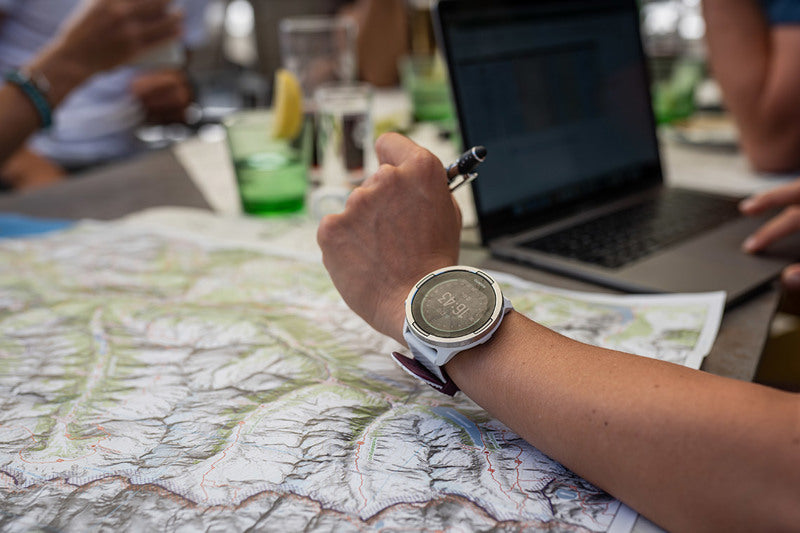
Getting started with our partner ecosystem
Training isn't easy on anybody. The purpose of our ecosystem is to enrich your experience and relieve a part of that "training load.” We have partnered up with leading product & service providers in the sports and wellbeing industry and a few other companies to make sure you get the best pre, during and post-workout expertise.
In the following tutorial, we will take you through the following topics:
How does our partner ecosystem work?
Who are our partners & what are the apps/platforms for?
What is the Value Pack & how do I gain access to the apps?
How does the Suunto partner ecosystem work?
Understanding how our partnerships work is the first step to a better training experience together with your Suunto device. The ecosystem comprises various tools, products and apps:
Suunto compatible 3rd party partner apps and services.
SuuntoPlus features in your Suunto 5 & 9 and downloadable apps via Wear OS by Google on your Suunto 7.
Compatible partner devices (i.e., sensors) and commercial offers from our partners via the Suunto Value Pack.
Assuming you have not used our services before, and you have just received your watch (Suunto 3, 5, 7 and 9) or you are just now reading about the partners, here is what you need to know to get started:
1. Your watch will connect to the Suunto app, which is the connector between what your watch records, or what you need your watch to show, and the platforms that might provide that information (be it a training plan, a route, temperature information, etc.).
This means that you can use your Suunto app or our partners’ online platforms/apps to analyze the information your watch recorded or to get the needed information for your training to your watch.
Create an account with the Suunto app, pair your watch and start exploring. We’ve gathered here all the information to get you started with the Suunto app. All of our partners and their apps are available in the Suunto app, under the Partner services tab of your Profile.
2. For our Suunto 5 or 9, we are continually improving the watch’s software by adding SuuntoPlus features to it. They are specific 3rd party information your watch will be able to record if you select any of the options in the watch’s dropdown menu before pressing the Start button. The data is displayed in the Suunto app and the respective partner apps after syncing your workout. Here is how you get started.
There are also various apps that you can use with your Suunto 7. For example, you can keep track of the local weather forecast with the help of Myradar directly on your watch.
3. You can use your watch with different sensors such as cycling power sensors, smart trainers, running sensors and heart rate belts. Use critical information to better plan your workouts or understand what your body is going through when training.
Who are our partners & what are the apps/platforms for?
In the past years, we have created fruitful connections with essential training and wellbeing service providers. You can check here a list with the current partners and a direct link to the Getting to know and started pages explaining how to get the app into use and what it will help you with.
In case you have already created an account for the Suunto app, you can go to the Partner services tab of your Profile and filter all the apps that show up into categories. Just tap on the type you’re interested in.
The Suunto compatible apps and services have a wide variety of tools. Get to work with your coach using TrainingPeaks or Today's Plan, prepare your routes using Wikiloc or Openrunner, view your hikes or rides with Relive or Adventurelog and virtually race your buddies with Ironman Virtual Club or UTMB.
You might notice that some of the services have a distinctive sign next to their logo. These apps are included in the Value Pack you automatically receive when you purchase a Suunto watch. We will talk more about it in the next chapter.
What is the Value Pack & how do I gain access to the apps?
The Suunto Value Pack is a collection of benefits offered by our partners. It comes with all the new Suunto watches and the deals vary from premium trials to free training plans and discounts.
We all want a free trial period for our subscriptions, a time in which we will be convinced (or not) by the value of the offered services. What the Value Pack does is:
It gives you the chance to try the best services out there (free of charge).
It provides you with discounts, free trials and special deals created by our partners for Suunto owners.
It helps you get started in the world of sports with everything you need, from coaches and training plans to routing services, nutrition tips and more.
After you’ve created your Suunto app account and paired your watch, an email will be on its way explaining to you how to redeem the Value Pack. The Valuepack is offered only for new products, so you will not receive the Valuepack email with the offers if you have a second-hand product.
You can choose any of the available partner services and start a free trial. The deals vary depending on the services offered and you can choose to redeem any of them. You will be provided with “redeem” links and codes and have two months from the date of purchase of your device to activate the Pack. Otherwise, the offer will expire according to our Terms & conditions. After the trial period has expired, you can decide which apps you wish to continue using and check their offers for premium memberships. Regardless if you choose to continue with a premium membership or not, you are still able to use the basic features provided by the partner together with your watch via the Suunto app.
Note: for any issues or questions that might arise, you can find help via our own and partners’ support pages. The Valuepack will change over time, so keep checking the valuepack page for the latest offers.
Lead image by Philipp Reiter
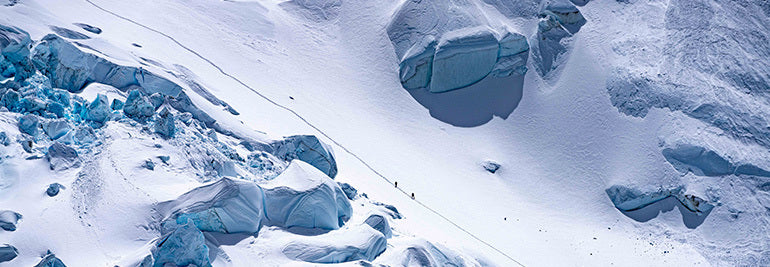
8 avalanche safety checks to tick off before the ski season
© Mark Smiley
Pro mountain guide, outdoor educator and Suunto ambassador Mark Smiley says knowing how to mitigate avalanche danger is a “$50,000 question” – there is no perfect answer; it consists of doing many small things right.
There is always danger in an alpine environment. Clearly knowing that, and having respect for the mountains, is where mitigation begins. Showing that respect comes down to being mindful of the details.
“Think of going backcountry skiing the same as a climber roping up for a climb, or a pilot getting ready for takeoff,” says Mark, 38, who is currently adventuring in the Southern Alps of New Zealand. “Doing some form of regular check is a great habit to get into.
“Early season snow dumps are super fun because the long wait is over, but it’s super important to know that avalanches can and do occur every year in these first storm systems.”
Based in Jackson Hole, Wyoming, Mark runs popular online outdoor education courses, and guides expeditions within the US and around the world. He and his mountaineer partner Janelle have climbed all 48 Classic Climbs of North America, as well as ski touring across the entire European Alps in 36 days. The couple live for the mountains.
Here is the safety check Mark does at the start of each skimo season. “These don’t take much time and avoid mindless mistakes that could have big consequences,” Mark says.
© Mark Smiley
Gear check!
Put new batteries in your avalanche beacon, and make sure the battery terminals are shiny and clean (sometimes batteries can corrode the terminals, resulting in bad connection).
It’s also a good idea to have extra kit in your car, such as extra avalanche gear, skins, AAA batteries, sunglasses, and sunscreen, that you can offer if someone forgets his or hers. “This saves a lot of time and hassle at the trailhead,” Mark says.
Slow down
Give yourself triple the amount of time to get ready for a trip because forgetting things at the start of the season is all too easy. Don’t rush, slow down, and do all those small things right.
Practice makes perfect
“Once there is enough snow on the ground, visit a beacon park and train with your beacon,” Mark says. “Especially if you or your partner invested in a new one this year.”
Get local knowledge
Before you go into the mountains, get online and research the avalanche danger in the area you will be skiing in. Find out what the avalanche trends there are. “Hopefully you’ve been checking the weather the past 48-72 hours to see if there have been major sun, wind, or snow events,” Mark cautions. “Check the avalanche report to see what the danger rating is, and dig a little deeper to see what recent avalanches have occurred. The avalanche report will also list the problems of concern. Pick a ski line, up and down, to avoid those problems.”
Know the plan
“Get on the same page with your partner(s) as to where you’ll go, and what the plan B and C are if plan A isn't working out,” Mark advises.
Car park gear check
“When you get to the trailhead, check to make sure everyone has a beacon with 50% or more battery power, that it’s on and that it works to SEND and SEARCH,” Mark says. Ensure it’s stowed properly.
“Making sure your shovel and probe are still in your pack, and not beside the garage after you dug out the car, is a good idea as well.”
Store the beacon properly
Keep your beacon safely in the right location. If you store it in a harness, wear clothing over top of it. “Often I get super hot while touring, so I like to have my beacon in my zippered (not Velcro) pants pocket,” Mark says. “Make sure you have nothing else in there, so the zipper stays closed the entire day. Don't be lazy and put sunscreen, a buff, or chapstick in there, too.”
Take it easy
Early season dumps means well hidden rocks. Don’t be a maniac; reduce your speed at the start of the season and wear a helmet.
Lead images: © Mark Smiley

Fuelling the engine: 6 principles of nutrition for athletes
When she's not in the mountains, you can find Emelie Forsberg in her garden or preparing delicious meals. © Matti Bernitz
How and what we eat is personal to each one of us. Some of us feel better and more energised by certain foods, while others feel quite differently. Regardless of our personal view, one thing we all have in common is that eating well is essential for top performance.
In our recent article series “Fuelling the engine” we heard from eight athletes and trainers about how they stay fuelled (see the end for the article list). What’s more interesting than their differences, is what they have in common. We’ve combed through and put together six basic principles of nutrition for athletes.
Find your rhythm
Suunto HQ is lucky to have in-house personal trainer and athlete Matias Anthoni walking around the office. He offers training and nutrition advice to whoever is interested. He says improving how often you eat can improve what you eat. Skipping meals is a no-no for dedicated athletes because it causes energy crashes and bad dietary decisions, which result in poor performance. He advises to get into a rhythm of having a healthy meal every three hours.
Get organized
To eat six or more well balanced meals a day demands forward planning. It’s pretty hard, if not impossible, to maintain this if you’re operating on a day-to-day basis. Ryan Sandes, Emelie Forsberg, Mel Hauschildt and Lucy Bartholomew all emphasised the importance of being well organised and planning ahead. They sometimes make extra portions of meals at the beginning of the week to have later in the week when they know they will be busy. Being organised means making sure there are plenty of easy, go-to meal ingredients available, too.
Balanced meals
There are a number of different aspects to having a balanced diet. Ultracycling man Omar di Felice sees it as maintaining a proper balance of carbohydrates, protein and fat, with fatty food being essential for his epic extreme rides above the Arctic Circle every winter. This balance of carbohydrates, protein and fat is what nutrition expert Dr. Rick Kattouf II also drills into his clients. He believes every meal – for dedicated athletes in training – should include this ratio: 50 to 60 % carbohydrates, 15 to 25 % protein, and 15 to 25 % fat. Balance also means eating a variety of foods to make sure you are taking in enough minerals and vitamins. Ski mountaineer Greg Hill tries to have a balance of colors in his meals.
Fresh is best
One thing that came through loud and clear from all our athletes and experts is the importance of eating fresh foods. For Emelie Forsberg and Lucy Bartholomew this means preferably straight out of the earth. As an avid gardener and farmer, Emelie grows and harvests much of what she eats. Lucy, ski mountaineer Greg Hill, Mel and Ryan all try to avoid eating packaged foods, instead choosing foods that are as close to the source of production as possible.
Whole is the goal
Should go without saying: avoid processed food and food with refined sugar. Instead, all our athletes opt for whole foods. Ryan Sandes questioned the idea that recovery shakes could ever replace the nutritional value of whole food. Don't take shortcuts; take the time to eat well. It’s self kindness.
Enjoy yourself
Emelie, Ryan and Greg all said they don’t get uptight about food. Emelie has a relaxed and intuitive approach to food, and Ryan and Greg are happy to allow themselves to enjoy a pizza or a burger each week. Greg cautions not to try to be perfect; aim to make the bulk of what you eat fresh and healthy. “It’s important to enjoy life as well,” Ryan says.
Click below to read articles in our Fuelling the Engine series:
Fuelling the engine: talking nutrition with Lucy Bartholomew
Fuelling the engine: talking nutrition with Emelie Forsberg
Fuelling the engine: a commonsense approach to nutrition
Fuelling the engine: talking nutrition with Ryan Sandes
Fuelling the engine: talking nutrition with Ultracycling Man
Fuelling the engine: talking nutrition with Mel Hauschildt
D.I.E.T (disaster imminent every time), and three unchanging principles of nutrition for athletes
Fuelling the engine: talking nutrition with Greg Hill
Lead images:
Photo by ja ma on Unsplash
© Craig Kolesky / Red Bull Content Pool
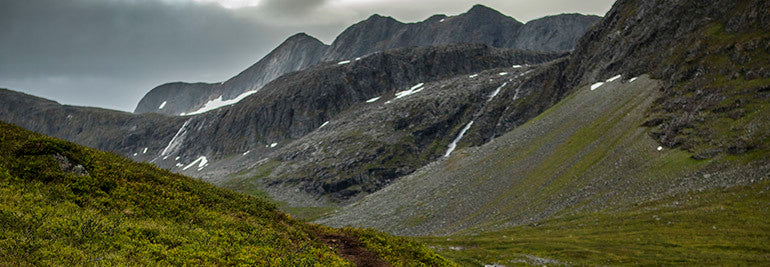
Big data for Vertical Week 2019 is here: find out who came out on top!
When we crunched the statistics from all the training around the world during Suunto World Vertical Week 2019, we felt our hard work had paid off. It had given you all the excuse to chase meters outside, whether on behalf of your nation, chosen sport or for your own challenge – exactly our intention.
There’s something about the sight of a hill or mountain in front of us that calls us to push ourselves. The challenge of the ascent is just as satisfying as the view from the top. That’s why we do it! Well done to everyone who participated.
Top countries
This year, we first report a major upset. In the previous two years, Austria has come out on top as the nation that achieves the most vertical gain by average. Not this year – the Alpine nation has been knocked off its perch. This year, Italy, Slovakia and Slovenia, all mountainous nations, climbed more than Austria. But more surprising, Portugal also came in ahead of Austria.
In the last two years the Swiss have also come in near the top, but this year they have dropped to the eighth position. What’s happened in Austria and Switzerland? Someone tell us!
Honorable mention
This year, Spain deserves an honorable mention. Spain came first in three divisions: totals per country, mountaineering, and trekking. It was also in the top five for four different activities: mountaineering, trekking, mountain biking and cycling. All up, Spain features in six of the nine country-related lists below, the only country to do so. Well done Espana!
Here are the results by nation
While these numbers might not seem so mind-blowing, remember they are averages, and a high average is indicative of many big days out in the hills.
Italy 385 m
Slovakia 360 m
Slovenia 346 m
Portugal 342 m
Austria 337 m
Spain 308 m
Switzerland 288 m
France 283 m
Canada 276 m
Norway 261 m
Totals per country
This year we also decided to look at the totals per country. In these countries, World Vertical Week participants have been really active and gotten out there to climb, even only a little, to add on their country’s total number. These little efforts have added up.
Spain 645.000 m
France 546.000 m
Italy 379.000 m
United States 377.000 m
China 250.000 m
Austria 216.000 m
United Kingdom 183.000 m
Japan 150.000 m
Norway 142.000 m
Switzerland 140.000 m
Average ascent by activity
At least as interesting as the country numbers are the activity specific stats. From these, we can see that skiers clearly put in the biggest average days. Trail running and mountain biking are probably under-represented because it’s winter in the populous Northern Hemisphere.
Like Vertical Week 2018, ski touring, mountaineering and trail running came out on top this year. The question is, which nations did the most of each?
Ski touring 830 m
Mountaineering 594 m
Trail running 474 m
Mountain biking 355 m
Trekking 311 m
Hiking 213 m
Nordic skiing 199 m
Cycling 193 m
Running 100 m
Activity by country
Ski touring
France 1127m
Italy 1085m
Austria 864m
Switzerland 828m
Germany 776m
Two countries pass 1000 m of vertical gain by average!
Mountaineering
Spain 1071m
UK 947m
Poland 798m
USA 716m
Germany 651m
Trail running
Hong Kong 1176m
Japan 901m
Malaysia 813m
China 765m
Portugal 713m
Asia dominating, showing the growing popularity of the sport in the region!
Mountain biking
Italy 476m
Slovakia 474m
UK 437m
Spain 422m
Austria 394m
Cycling
Colombia 499m
South Africa 485m
Israel 446m
Spain 438m
Italy 363m
These nations have favorable weather for cycling in March!
Nordic skiing
France 379m
Canada 321m
USA 285m
Norway 243m
Austria 212m
Trekking
Spain 566m
Italy 527m
Malaysia 363m
Italy 362m
Poland 304m
Individual top performances
While we can’t give away too much information here, such as who and where, we can share some insight in the individual top performances over the week: To be on the pointy end of the rankings one had to climb more than 10000 meters over World Vertical Week. And to stand out with a single activity one had to climb 4000+ meters in one go!
Thank you, everyone, for participating!
Read three inspiring stories from the World Vertical Week!

Fuelling the engine: a commonsense approach to nutrition
Eating well is essential for athletes. The bigger your goal, the more nutrition has to play a central part of your training plan. Take shortcuts on how you eat, and you’ll eventually pay for it.
But the topic of diet, what we should and shouldn’t eat, has become touchy and confusing. There are all sorts of diets out there – paleolithic, vegan, gluten-free, low carb, high carb – each one with advocates claiming their way is the one true way.
Matias Anthoni prefers a common sense approach to nutrition.
“Nowadays it’s become a big topic, and everyone has his or her own opinion, and it seems hard to find the real truth,” says Matias Anthoni, Suunto’s in-house personal trainer. “It’s become trendy to follow a kind of diet.”
Anthoni, 26, has a Bachelor in Sports and Health Promotion, and gives nutritional advice to Suunto employees, as well as personal fitness training. He takes a simple, “nonsectarian” approach to nutrition, rather than buying into the hype of one diet over another.
“As long as you get the nutrients it doesn’t really matter what diet you follow,” he says. “You can teach your body to thrive on different diets. The body is quite adaptable. But we do need certain basics. The question I always ask is, would my grandma recognize it as food?”
Here are Anthoni’s five down-to-earth tips for good nutrition:
1. Start with your meal rhythm
This is the first topic Anthoni’s raises with his clients during a consultation. Just improving how often you eat can improve what you eat. Many of his clients skip meals or have long breaks between meals; this results in blood sugar levels dropping, then tiredness, and then cravings and impulses for unhealthy snacks.“With a more steady meal rhythm you avoid big spikes in the blood levels, make better decisions, and are less likely to just reach for a chocolate bar,” he says.
Meals should be about three hours apart, and consist of a good breakfast, lunch and dinner, with smaller, healthy snacks in between. “It leads to healthier choices and you’ll have more energy,” Anthoni says.
2. Plan ahead
“You can’t be a top athlete if you are eating poorly; it’s not just about training, it’s about eating as well,” Anthoni says. “It really helps if you plan your meals like you plan your training. Know what you are going to buy and know what you are going to make. When you come home from work, or after a training session, it’s all ready to go.”
3. Follow the Nordic plate model
Anthoni says in Finland there’s a traditional “plate model” or a way to divide your plate into three sections: one half should be salad and vegetables, one quarter should be carbohydrates, and one quarter protein. This balanced plate ensures you will get enough of all the key nutrients.
4. Eat quality food
Quality can seem like a vague notion, so Anthoni recommends a common sense approach here, too. “Have a look at your plate – are there all the colours – red, green, yellow?” he asks. “Are you eating the same thing every day?” Anthoni suggests finding and following basic nutrition guidelines. “They provide a good start, and then make small changes to fit yourself from there,” he says.
5. There’s no one size fits all diet
Deciding what to eat depends on your goals. “The more you move the more you need,” Anthoni says. “If your goal is building muscle mass, then you need more protein. If you are an endurance athlete, eating enough carbohydrates becomes more important. There is no one size fits all, no one plan can fit everyone. You need to have your own plan.”
Lead image: Photo by Roosa Kulju on Unsplash.
READ MORE
Fuelling the engine: talking nutrition with ultra runner Lucy Bartholomew
Fuelling the engine: talking nutrition with triathlete Mel Hauschildt
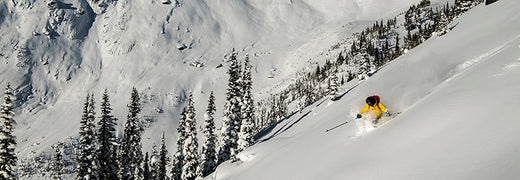
Mentorship in the mountains
When I think back to my first introduction to the mountains, I remember watching our mountain guide and wondering how he was so confident to lead all of us clients. Then I learned how he had grown up in the Alps and learned from various experienced mountain guides, and from his own experiences. Several years later, when I started immersing myself in the mountains I reflected on his mountain education and understood its merits.
In those early days, my excitement would easily overcome my knowledge and I knew I had to learn some mountain sense, otherwise I would not last long. Luckily for me, there were many courses available, and I jumped into these with enthusiasm.
Greg Hill sharing his mountain knowledge.
I took my Canadian avalanche course, a 7-day intensive, that sorrowfully ended in us being part of a rescue. A sad day that re-affirmed my need for more knowledge. This near miss taught me so much and made me vow to learn as much as I could. To keep myself safe as well as those I skied with.
I searched out ways that I could spend time with more experienced people. Sponging up their thoughts and skills as best I could. I can honestly say that “always ski from the top” told to me in a Swiss accent has saved my life countless times… plus many other tricks and techniques for traveling through hazardous mountain terrain. This knowledge and its value became very clear a few weeks after learning it.
I was out skiing solo in the mountains near Whistler. I had worked my way up and safely into the alpine and all seemed stable. As I neared the summit I was fatigued and ready to head down. I was still about 100 m below the summit but from where I was I could edge my way out and onto the face and head back to the car. Doing this would mean I was undercutting the top 100 m pitch but stability had looked good. As I wondered about this action, his wise words echoed in my head. Realizing what I was about to do, I toured up to the summit of Vantage peak. Easing onto the summit face I felt better knowing there was no snow hanging perilously above me. The second turn in I triggered the whole slope and watched a class 3 avalanche thunder to the valley floor. Looking down below my skis I realized how close I had come to having cut below this slope and had it drag me to the valley below.
"Somehow, somewhere I gathered enough wisdom from others, and as much knowledge from the mountains to be in a position where I am now a mentor," says Greg Hill.
Each of us learns differently and looks at the world in our own unique way, so my mentorship process had to have several aspects to it. It had to involve many different mentors so that I could create my own mountain sense. It also seemed that time spent taking the skills and I had learned and testing them in the mountains was as worthwhile. That the mountains could be as much of a mentor as the guides I was learning from. Without those words of advice from experienced people, I could not have gone out and learned even more from the mountains.
Once my base was solid enough, I spent as much time out and touring around as possible. Watchful and listening; the mountains taught me a lot. Being self-critical I tried to always analyze my actions and see if they were the appropriate ones. Even if nothing went wrong, I would constantly question my skin tracks, and wonder if my actions were the right ones. Mountains often give you false positives, where you think you did the right thing, but really you just got lucky. By examining my actions and discussing with my friends the education continued.
Many years later and I find myself on the other end of the stick. Somehow, somewhere I gathered enough wisdom from others, and as much knowledge from the mountains to be in a position where I am now a mentor. Not that my own learning is over, it never will be, but I have enough tricks and techniques that I can pass this on to others. Ideally giving them the tricks that keep them from making mistakes in the mountains.
All images ©Bruno Long Photography / Suunto
Watch Greg Hill’s 7 terrain tricks video
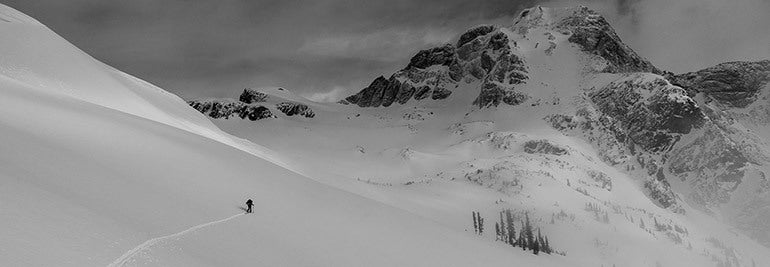
Yes, you can use your Suunto in the mountains for ten straight days
It’s no secret that for years I have been addicted to recording my adventures. It started out in the pre-tech era with my first ski traverse in 2001. A 5-day loop through the mountains where we skinned and skied our way around the Hurley Horseshoe traverse. Afterwards, I remember taking a pencil and reliving our traverse by drawing in our up and downs, our summits and creek crossings.
The habit grew on me. It got to the point where I had maps tacked up on my walls with lines drawn all over them. My documentation led me to go to where there were no lines and I would explore all day and return to fill in the blanks.
When Suunto came out with the Ambit my addiction evolved. All of the sudden my pencil lines on flat maps became 3D lines laid over satellite images. I could go on a wild excursion, come home and place a line onto mountaintops and down steep ski descents. My adventures became more interactive and ‘lived’ online. Since then I have always imported all my lines, from Norway to Pakistan to remote Canadian mountaintops – and now I can see all my efforts overlaying the world. It’s truly amazing.
Since that first ski traverse in 2001, I have done 10 multi-day traverses – up to 21 days long – but my last was in 2009.
This year as we prepared for a 10-day trip I wondered: would I be able to use my watch to log every day? We hoped to be completely self-sufficient – every gram added to the 20+ kilos of weight on our backs. I would not bring anything extra. Which meant that I did not want to bring a solar charger or battery pack for my Suunto Spartan Ultra.
Of course, I wanted to have this entire expedition logged – but would the watch really last long enough? With a few tweaks to settings, I could theoretically give the watch enough battery for 65 hours of skinning and shredding. Well… maybe not shredding, since our bags did weight a lot.
We started the trip on April 16th and hitchhiked our way to the start. I woke up sick, with low energy, but the wheels were in motion and I felt like I could not let the team down.
The Monashee traverse is a ski tour through the rugged Columbia mountains that sit to the west of Revelstoke. Once you get it, there are no ski lifts, no towns – just one cabin and a 100 km of skiing from South to North. It is not particularly remote, but it is challenging. With mountains peaking around 3000m, huge granite walls and heavily glaciated terrain, success was never guaranteed.
For the first four days the weather was stormy, and the avalanche hazard went really high. This was the most challenging terrain to negotiate but as luck would have it our bigger descents, and more committing ascents, had already slid – the only reason we were able to move through this complex terrain.
Ski traverses have a simplicity to them that is very rewarding. Each day the challenges are simple, eat, travel through complex unknown terrain, stay safe, eat, drop the big bags and ski a little, find a great place to camp, eat, sleep and repeat. Daily new views are seen and appreciated.
We fell into a routine and moved endlessly north. Most of our challenges were weather based and we persevered forwards. On the day of our lowest morale, we also experienced our best sunset and northern lights, which rejuvenated our excitement and desire to dig deep and push forward.
7 days in and my watch was still recording each day. But with 3 days to go and 30% battery power I wondered – would it last?
Finally, the weather got better and we managed a couple of great ski lines. Chris Rubens got a great line in the alpenglow on Mt Mulvahill.
10 days of touring finally had us boot packing up Mt Begbie, Revelstoke’s signature mountain. The watch was still going and we were all exhausted and excited to be finishing off with this summit.
All-in-all we ski toured 100km, including 10,000m of ups and downs, and over 68 hours of logged lines. The watch made it through. Was it all worth it? I think Chris’s last turns answer that question.
All images © Greg Hill and Chris Rubens
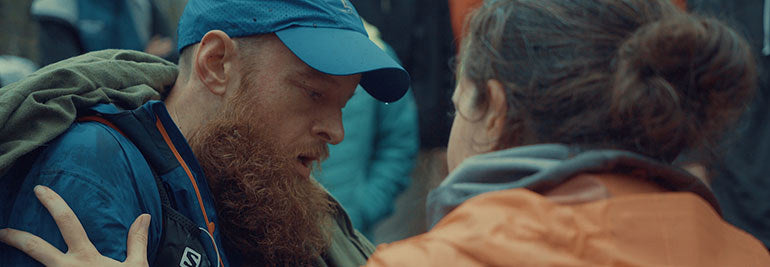
What’s tougher: running the Barkley Marathons… or training for it?
But as we approach the Barkley’s off-season, let’s take a look not at the race – but the training. Soon Robbins will release a short film detailing his Barkley experience – in anticipation, he’s shared a short piece focused on an incredibly difficult full overnight session where the goal was to reach 20,000ft (6,100m) of climbing in around 11 hours. See how his session unfolds – then keep reading for some more insight into his ‘off-season’.
Watch this advanced preview of Where Dreams Go To Die documentary now.
If this video doesn’t make your legs hurt, then this will: Robbins just finished the Nolan’s Fourteeners, fourteen 14,000 peaks in 100 miles, with a 60-hour cut-off time. Less than 20 people have ever completed the route.
A post shared by Gary Robbins (@garyrobbins) on Jul 31, 2017 at 10:24am PDT
"Adventures were had, and we got it done. Nolan's 14 finishers in 56h39m, with the best adventure partner imaginable." –@garyrobbins
We’ve collected some of Gary's thoughts and feelings on the recent adventures, what’s upcoming, and what’s not just worth the time (hint: hypoxic training). Read on.
You didn’t have the easiest time on Nolan’s!
After trudging through fourteen plus hours of fog, wind and rain we found ourselves hypothermic and in a bad state. We actually had some snow flurries on Oxford (8th peak going south to north) and we realized we couldn't safely continue. We made the hard call to drop off the mountain and to call it a day. We skipped Belford (maybe one mile away) because of the state we were in. We dropped about five miles down to a trailhead and had our families and crew meet us there. After warming up and being reminded by my lovely wife that we still had 31 hours left to get this done we made the call to get back in the game. We turned around and headed all the way back up to the saddle we'd dropped off maybe five hours earlier.
Nolan’s Fourteeners are like a Barkley, with less vertical but way more altitude…
Exactly. It’s only been done a handful of times. I’ll be coming straight from sea level into that! But we had access to our support crew – we can check in six or seven times over the course of the traverse.
The altitude is the biggest issue.
Yeah – I live at the coast. But my partner in the coaching business studies this stuff – he says I have to spend 12 hours a day in a hypoxic chamber if I want any benefit from it. No time for that!
You have a few events of your own you’re organizing.
I run a race series back home and I’ve got events before and after the Nolan’s attempt. The biggest is the Squamish 50 – it’s the biggest ultra in Canada, with 1200 participants from 20 countries.
Do you compete in them yourself?
I just don’t have the time. I want to make sure it’s a great event for everyone who comes. I don’t run in the events because I need to run the event – I congratulate every finisher who comes across the line. During the Squamish 50 I’ll get about 8 hours of sleep over three days.
You’re an organizer with some epic terrain close by. Any chance we’ll see a race like the Barkley, in your backyard?
You know, we have the terrain for it – it could rival the Barkley on paper. But it’s damn near impossible to get the permits, and I don’t feel the need to replicate something so unique that Laz has created.
Take us back to your recent adventure on Nolan’s – how did you finish?
It rained for another 10+ hours up high but eventually the weather broke, before it broke us, and we were rewarded with a clear night on our third to last peak (La Plata) and a beautiful sunrise while ascending our second to last peak, the highest point in Colorado, Mt. Elbert at 14,433. I shed a tear on our final peak, Mt. Massive because I really couldn't believe what we'd just accomplished. It wasn't what we'd set out to do time wise, and I'm pretty sure we just completed the least scenic version of Nolan's ever, but the sense of accomplishment that overwhelms me today is the absolute definition of euphoria.
So there’s no question you’re doing Barkley again.
I’m 100% returning for a third attempt in 2018.
Main image and video by The Ginger Runner
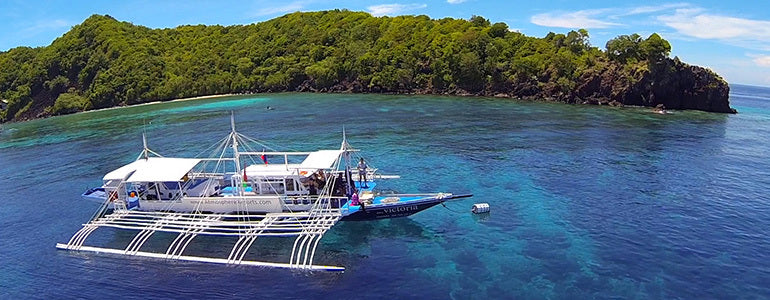
#DiveWithMe winner announced!
After a big response, we’re pleased to announce the winner of our #DiveWithMe contest – 24-year-old diver Theresa Torp! When she found out she’d won, her currently non-diving friend Anna immediately came to mind. The two have good times ahead! Theresa's dream is to swim with a whale shark. © Theresa Torp#DiveWithMe winner Theresa Torp and her friend Anna Sofie Starup have won an all-paid week-long trip to Atmosphere Resorts & Spa in the Philippines. The resort has a beautiful beachfront location on the island of Negros Oriental near Dumaguete. Anna will have the opportunity to complete a four-day open water diving course at the resort, and join her friend on some incredible dives. We asked Theresa about diving and why she picked Anna to join her. Congratulations! Feeling excited?
I can’t wait to experience the Philippines! The country has been at the top of my bucket list for as long as I can remember, and who knows, maybe I’ll get lucky and experience my first meeting with a whale shark as well!Theresa (left) and Anna (right) will travel to the Philippines this summer. © Theresa TorpSo, who is Theresa Torp?
I’m an occupational-therapy student and live in Denmark. When I’m not studying, I’m working my ass off as a sales assistant to save money for scuba diving and exploring the world whenever school “lets us off the hook”. When did your journey as a diver begin? Four years ago while travelling in Brazil I met the most amazing and inspiring people; a marine-biologist and a dive-instructor who didn’t consider scuba diving as just a hobby, but as a whole lifestyle and a big part of who they are. I was extremely fascinated about their way of living, and I’m pretty sure they’re the reason that scuba diving has become such a big part of who I am today.© Ulrika Kroon / Atmosphere Resorts & SpaYour most incredible dive experiences?
Every dive has it’s own story and it’s own memories, but some of my most memorable have been exploring the Cancún Underwater Museum, playing chicken with a huge and scary tiger shark at Cocos Island, rubbing a playful manatee’s belly in Crystal River, exploring enormous shipwrecks at Key Largo and kissing dolphins in the Bahamas. My greatest dream come true was diving side by side with hundreds of schooling hammerhead sharks at Cocos Island, about 550 km from the shore of Costa Rica.
© Bo Mancao Who is the lucky friend joining you? I met Anna Sofie at the first day of high school and we quickly became inseparable! A couple of years ago she moved to the other side of the country, but we stay in-touch and I still consider her as one of my dearest friends. When I heard about this amazing #DiveWithMe competition, she was the first and only person who crossed my mind! Not only will we get an opportunity to catch up in the most magical setting, I will introduce her to scuba diving, my biggest obsession. Even though I’ve experienced a lot of incredible dives, I’m certain that nothing could ever be compared to sharing it with her!
© Bo Mancao What would you like to show her underwater? That’s a difficult question as I’m looking forward to show her everything the ocean has to offer! I’m also really looking forward to show her the stunningly beautiful colours of the Coral Triangle and who knows, maybe I will get to share my first meeting with a whale shark with her – that would be a big dream come true.
Is she excited about the trip and learning to dive? I’m not sure if I’ve ever seen her more excited! Anna is one of the most joyful and adventurous people I’ve ever known and I’m sure that she’ll turn out to be an amazing scuba diver and dive buddy. Just as I’m sure that this trip to the Philippines will turn out to be an adventure of a lifetime!Lead image: © Ulrika Kroon / Atmosphere Resorts & Spa
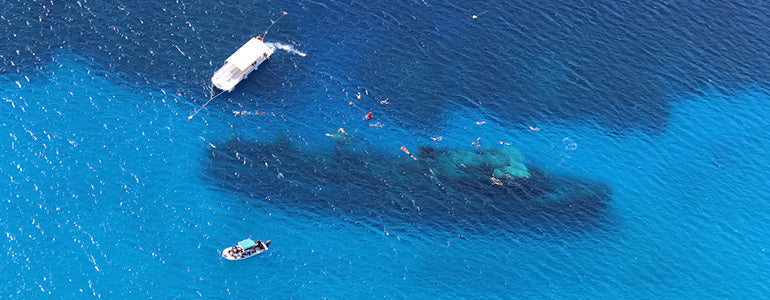
7 incredible shipwreck dives
For divers, nothing quite beats the experience of a wreck slowly coming into view as you descend into the deep. There is a sense of wonder at the fallen grace of a once great ship, and a feeling of awe at the loss of life. They are also often fantastic dive locations, having evolved into artificial reefs, attracting abundant sea life. Here are seven of the best.
U.S.S. Kittiwake, Grand Cayman Great for: wreck rookies
One of the most popular and accessible wreck dives around the world, the 76.6m long Kittiwake was purpose sunk off Grand Cayman’s Seven Mile Beach just a few years ago. It’s also been stripped clean of hazards such as doors and hatches. All five levels of the ship can be penetrated, depending on the certification you have.
Rainbow Warrior, New ZealandGreat for: Politically motivated divers
When French secret agents sunk the Greenpeace vessel in Auckland harbor in 1985, it caused a huge political scandal. Two years later the ship was scuttled at Matauri Bay in the Cavalli Islands to serve as a dive wreck and artificial reef to promote marine life. At a max depth of 26 m the Warrior is now home to a huge variety of aquatic life and is a world renowned dive site.
Bell Island, NewfoundlandGreat for: Adventurous divers
Bell Island is one of the few locations in North America that was under attack by German forces during the Second World War. In 1942, U-boats raided the island twice, sinking four iron ore carriers and destroying a loading wharf, killing more than 60 men. “Today, divers visiting Newfoundland’s rich waters can dive these remarkable wrecks that have transformed into stunning and colorful reef structures,” says underwater explorer and Suunto ambassador Jill Heinerth. Check out the video she created here:
‘Badewanne’, Gulf of FinlandGreat for: Undiscovered wrecks
Numerous wrecks lay on the Gulf of Finland’s sea bed, from 17th century merchant ships to battleships and submarines from the first and second world wars. During the latter, German sailors dubbed the Gulf of Finland ‘badewanne’ or bathtub. Today it’s the name of a team of Finnish explorers, scientists and historians dedicated to finding and preserving lost wrecks such as Torpedoboot T18. But if you’re hoping to dive there yourself, bad news: the team does not release the site locations to preserve their integrity.
Chepstow, EnglandGreat for: Underwater attractions
How can a lake on the border between England and Wales be home to a great bucket-list wreck dive? That was our question too. But after watching the video below from freediver Daan Verhoeven diving through a sunken plane, we think you’ll also want to add this venue to your list. The lake is home to a number of attractions, including a Landrover, Royal Navy Wessex Helicopter Mk3 and a British Aerospace Jetstream 200. There’s also a gnome garden if you’re into that.
HMS Hermes, Sri Lanka Great for: Sea life
Lying at a depth of 53m off Sri Lanka’s east coast is the Royal Navy Aircraft Carrier HMS Hermes, the first ship to be designed as an aircraft carrier. It’s a unique dive. She lies on her port side with many features still intact, including her tower and thanks to clear visibility you can also expect to see large tuna, grouper and jacks. Watch a video of a dive here:
The Yongala, Australia Great for: Visibility, sea life and features
At 109m, the Yongala is Australia’s largest and most intact historic shipwreck and offers incredible diving within the world heritage Great Barrier Reef Marine Park. She sank off the coast of Queensland during a cyclone in 1911, killing 122 people, a racehorse called Moonshine and a red Lincolnshire bull. With no telegraph facilities, she could not be forewarned of a storm. Expect to see abundant sea life including manta rays, sea snakes, octopuses, turtles, bull sharks, tiger sharks, and of course, some beautiful coral.
Lead image: This photo, “USS Kittiwake”, is copyright (c) 2013 to KatieThebeau and made available under an Attribution-Noncommercial-Share Alike 2.0 license.
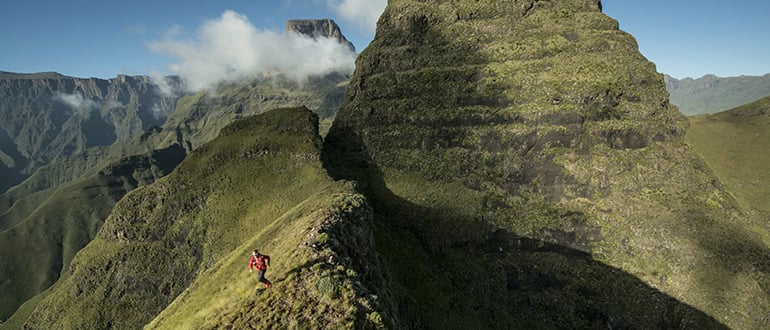
How to handle setbacks like a champion
Being an athlete isn’t all glory and endorphin highs. Just ask champion ultra runner Ryan Sandes. He’s had to pull out of three races recently due to catching glandular fever and struggling to recover. Now he’s taking a break from running to allow his body time to fully heal. We caught up with Ryan and asked him a few questions about how he deals with setbacks.
How are you doing after your recent setbacks?I feel pretty low and disappointed now, but I am focusing on switching off from my setback and not overthinking it too much as that just makes it worse. I am putting a plan in place to fix my health and that is all I can do. I have had a crap year racing, but I have had some epic experiences this year, traveled to some awesome places and it is important to be grateful for that!
Check out Ryan's recovery tips for before and after the race!
Ryan enjoys a soak after announcing he's taking a short break from ultra running to recover. © Ryan SandesHow do athletes often react to a setback, whether injury or illness? It is really frustrating and demoralizing at the time. You think back to all the hard training and effort you have put into a specific goal and then all of a sudden that all disappears. I always try to focus on the positives in the situation and remember that a setback is not the end of the world – it’s just a hurdle on the way to reaching my dreams.
Find out how to use the Suunto Ambit3 to help you recover
Are setbacks always a bad thing or can they be helpful in unexpected ways?
I think it’s actually through our setbacks that we learn the most about ourselves and develop as people. It’s easy when everything is going right, but when you have a major setback it really tests you and when you come out the other side, it makes your achievement that much more rewarding. I find after a big setback I am more focused and determined than ever.
Having unstructured fun is important for recovery. © Ryan SandesWhat do athletes often fear most about setbacks and is this fear necessarily true? It’s a common worry that if you can't train you will lose your fitness and not be ready for an upcoming race, but I believe often the body knows best, and the time off from training helps it to fully recover and get strong after all the training. You will often see an athlete come back really strong after an injury because they have taken enough time off.
Read more recovery tips from Suunto's ambassadors!
Setbacks can make you stronger, Ryan says. © Ryan Sandes
If someone gets an injury, they can sometimes get training withdrawal– how do you recommend working with this? Sitting around with an injury is really frustrating and you get 'cabin fever' as you know all your fellow athletes are outside training. It’s important to focus on fully recovering and doing your rehab so you can come back stronger. If you can’t run and are feeling really frustrated then go outside for an easy hike to be outdoors, but don't push yourself otherwise you will just get injured again.
What recovery really means – from a physiology specialist
What to do if you lose your motivation because of a setback?
If you are feeling a real lack of motivation take a complete break and focus on the fun element of your training or just having fun in general. This could be running for fun with no specific time or training goals or even just hanging out with friends and having a laugh. Take your mind off training and the setback to reboot your system and feel inspired again. Don’t take life too seriously and accept that you will have setbacks along the way.
It's important to keep the big picture in mind, Ryan says. © Ryan SandesDo you have a favorite quote about never giving up?
"If one dream dies, dream another dream. If you get knocked down, get back up and go again." - Joel Osteen
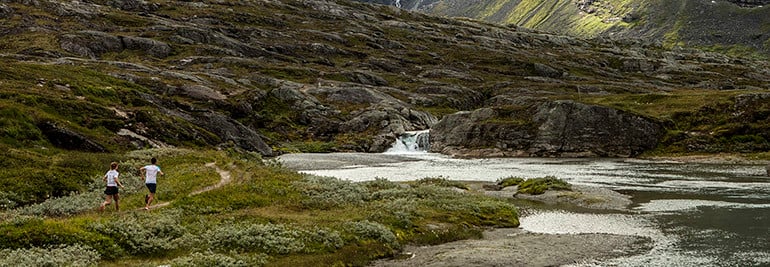
Three inspiring stories from Suunto World Vertical Week 2018
Kat Schjei, California, USA
Feeling inspired by @suunto #verticalweek ; in the last seven days I have climbed over 5,000 feet either wearing this adventurous toddler, or pushing him in the stroller. It isn't easy, but I thrive on the challenge and seek more adventures with my sidekick every day. 🗻 #verticalweek #noexcuses #motherrunner #BAMR #BAMRbassador #runitfast #irunhesleeps #saltymountainmamas #getsalty #trailrunner #ultrarunners #trailchix #lasthorse #r4twc #running4thosewhocant #nomeatathlete #ultrarunner
A post shared by Kat Schjei (@smushtush) on Mar 1, 2018 at 6:15pm PST
“I live in Southern California but have lived all over the US. I'm a mom of three small kids and work as a nurse at the children's hospital, but that doesn't stop me from exploring and climbing as much as possible.
I'm currently training for my fourth 100-mile race, the Tahoe Rim Trail 100, which is located on some of my favorite peaks to climb. My Vertical Week was fun! I strapped my youngest son on my back and we climbed around 1500 feet a day, which is a crazy hard strength workout with his added weight. He loves taking in the sights as much as I do, and I know this is great race training because the added weight feels like double the distance.
I'm very much an advocate for getting kids outside; my three have learned to fall in love with the beauty that is rewarded when you put effort into a steep climb. I live my life to lead them and other families by example.”
Anna Persson, Norway
Added 4000m to my vertical weekend today! It felt like 1000 😁 #verticalweek #timetoplay #romsdalen #uterauma #suunto 's #week #mountains #outdoorlife #training #sun #winter
A post shared by Anna Persson (@anna_persson_) on Mar 2, 2018 at 11:23am PST
“I came to Norway 12 years ago. A summer job made me come here and nature has kept me here. The nature of Rauma in Romsdalen, Norway is spectacular with its many high and steep mountains by the sea. The mountains are in my backyard so I can walk to them from my front door.
My favorite training mountain in winter time is 1439-meter-high Kyrkjetaket – and the mountains around it. I often climb it two or three times before I go to work in the afternoon. The same mountain feels different every day. Snow and weather conditions may vary from day to day but when I`m at the top, it’s always the same; magical, wonderful feeling of freedom.
My #verticalweek was pretty hectic because of work. I also caught a cold. Luckily the snow and weather conditions were perfect this week so it was easy for me to do some vertical meters every day.”
Hannes Gehring, Colorado, USA
It’s been nearly 7 months since I’ve raced. Following my last race I found myself fighting demons, questioning and challenging my dreams and pursuits in ultra-running. I ballooned from a race weight of 168 to 206 lbs by mid December. It has been snail-crawl back to fitness but my focus has never been more deliberate. Yesterday’s 24 miles and 7,000 feet of climbing capped the week at 100 miles and 20k of vertical gain and felt like an unleashing of a few months worth of frustration, angst, and doubt. Sometimes following your passion, your crazy, and your heart is the only way to dig out of that hole you’re in. I’ve been digging for a few months. I’m back and there’s a fire 🔥🔥🔥coursing through my veins. (📷 Yesterday circa my 41,288th step 📸captured here by ninja photographer @itsmarincita) #uphillswagger
A post shared by Hannes Gehring (@uphillswagger) on Mar 5, 2018 at 10:46am PST
“Last March I decided to pursue ultra-running full time and moved into my truck with my two rescue dogs. They are the reason I found mountains; once I had rescued my first dog he led me to trails and helped me find my passion in mountain running.
Suunto's Vertical week went great for me. I was fortunate enough to climb over 20,000 vertical feet and cover over 100 miles, including a summit of the 14,035' Mt. Sherman here in Colorado.
I think any climb that gains 4,000 feet or more feels like a really burly climb. Typically, for my big days I aim for over 10,000 feet of uphill climbing. The steeper the better as far as I am concerned!
Ultra-running is my biggest passion (other than my dogs). So, my biggest motivation when a climb gets tough is that I want to do this professionally at the highest level. It keeps me humble and hungry grinding up a steep trail, knowing my dreams are lofty, but attainable – if I just keep pushing up that hill. Plus, my dogs make every climb look like it's a cake walk and that's a humbling motivator as well!”
Congratulations, Kat, Anna and Hannes! Your new Suunto Spartan Sport Wrist HR Baro watches are on their way to you.
And a big thank you to everyone who participated in Suunto World Vertical Week and shared photos and stories. Happy adventures to you all – both in the ups and downs!
LEARN MORE ABOUT SUUNTO WORLD VERTICAL WEEK 2018
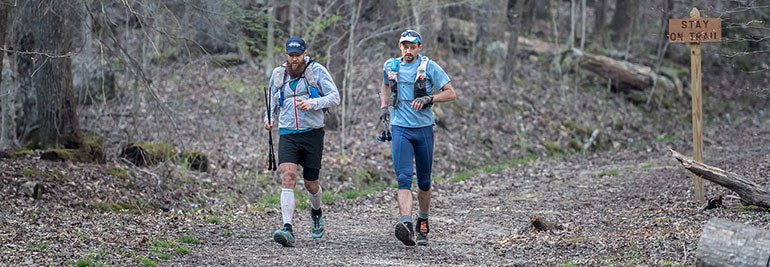
Going back for a beating: Gary Robbins on his second attempt at the world’s toughest footrace
There’s about 67,000 feet (over 20,000m) of ascent
Which you cover over the course of two and a half days– if you can keep going that long, of course. And for better or worse, the course isn’t an A-to-B – it’s a loop that you do 5 times. Thus, the ‘Barkley Marathons’.
Gary at the yellow gate that marks the start and the finish of the Barkley Marathons course.
The race is one hundred and thirty something miles
No one knows for sure – the route evolves every year at the whim of the race organizer. If there are no finishers the course stays the same, if there is a finisher the course is made more difficult by adding another checkpoint that involves an additional climb and descent. Most think the loop, done 5 times, is a bit longer than an actual marathon , and there’s no question the terrain is absolutely brutal. Only 14 people have finished the race in nearly thirty years And what’s worse – every time there’s a finisher, they make the course harder but not necessarily and longer.
Oh, there’s no trail markers
A huge part of the challenge is to navigate the race course. To prove you’ve completed the whole course, you tear a page out of books you find hidden at various points along the race route. After every lap, the organizer will count your pages.
You have no idea when the race will start
Anytime between midnight Friday and noon on Saturday! So it’s tough to plan your rest before the race.
The race takes two and a half days.
How do you train? You go up
I live in Vancouver, BC, and we’ve got three peaks right in town, each of them claiming about 3,000 feet of prominence. I do a couple laps at a time for 20k vert training session about once every seven days – that takes about twelve hours. The other days of the week I go out for a few thousand a day. In the final three weeks of training I'll likely do a 15,000ft workout, and maybe 2x 20,000ft. The 20k workout can take up to 12hrs. Other than that I do at least one near daily lap and attempt to get my overall weekly vertical up to at least 30k ft.
What’s in the pack for a 20k climb?
The way the race is set up, racers can return to a campground (where their cars are parked) at the start line at the finish of every loop. So that’s how I do my training – I can access my vehicle twice during a long training session a day. I’ll bring a water for three hours, food for 12 hours, and gear like a waterproof breathable kit, shirt, gloves, micro spikes for snow.
I need 250 calories an hour
Running is a calorie deficient sport and you can only digest so many calories while moving. 250 per hour is the formula for success. With that, you should be able to move forward, so that’s what I’ll do during the race. After each lap (about 8 - 10 hours, I’ll quickly down about 500 calories go for a full meal, then reset, then get going again. Liquid intake is totally dependent on weather – if it’s hot, more water. Cold, less.
You need two pairs of shoes
I do most hundred-milers in one pair of shoes, but the brush and briars on the Barkley is so brutal that it just can tear shoes apart.
Navigation skills are crucial to success in The Barkley.
And you absolutely need a compass
Having a map, compass, and the skills to use them is an absolute necessity. It also helps if you have a course veteran to glean knowledge from. Getting lost can mean the difference between finishing and not finishing. You have 60 hours, and clock doesn’t stop if you get lost.
I love the weekly vertical totals on my Suunto
My goal is to get as much vertical as possible. It’s the only way to prepare for this event. The watch shows you your daily and weekly vertical totals. My workout ENDS when I get as much vertical as I need – so my watch makes it easy. The weekly graph that is a great reference point I can’t get away from. It’s a daily reminder that if I don’t get out of my door, I’m not getting my vertical in, and I’m not training hard enough!
Stay tuned during Suunto Vertical Week 2017, as Gary plans to put up over 60k vertical in just a two week stretch – and make sure to check out the Barkley Marathons documentary, now showing on Netflix.
All images: © Matt Trappe / Trappephoto.com




























































